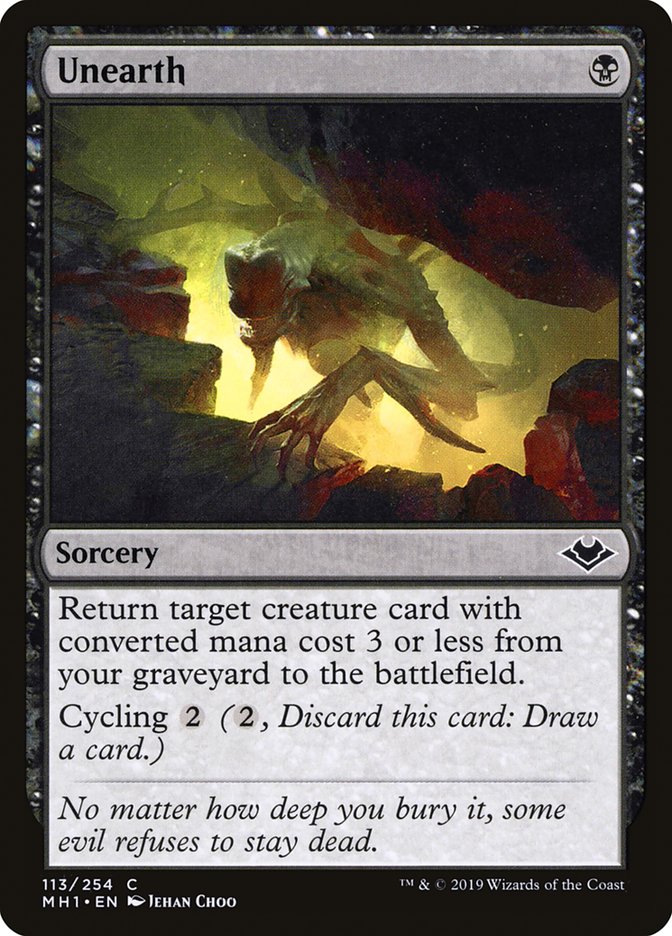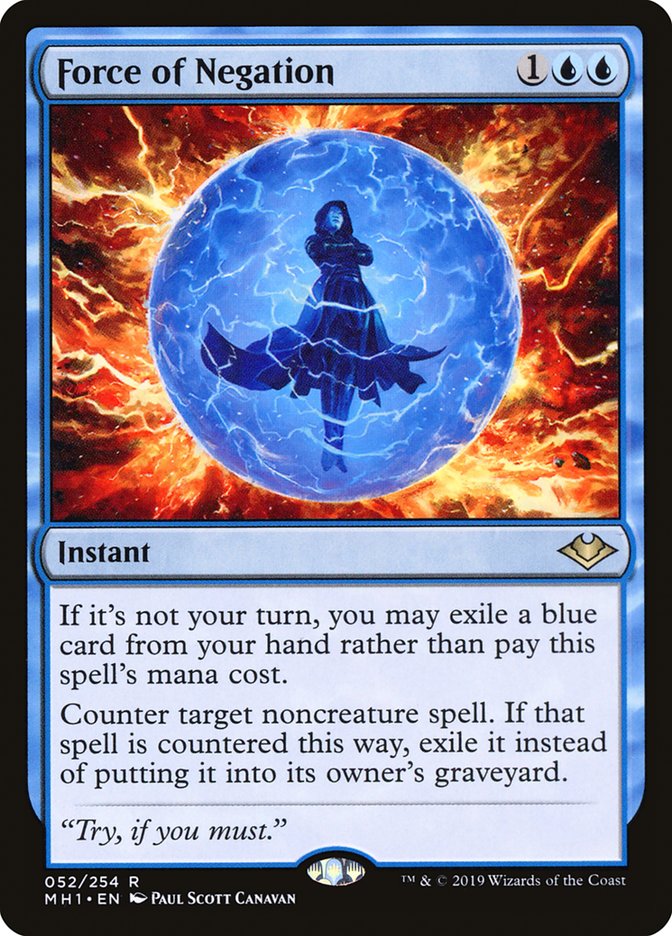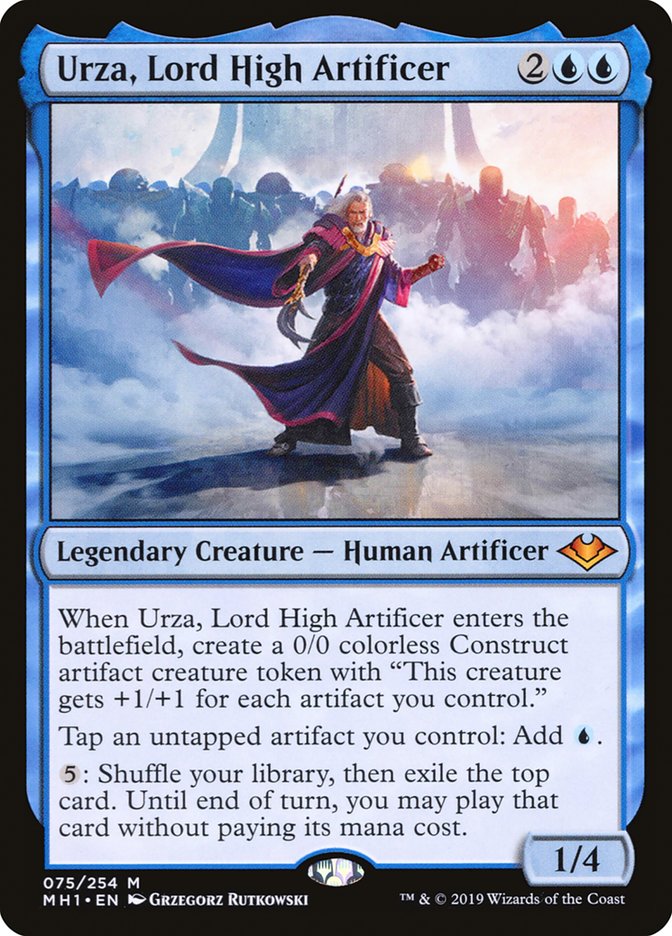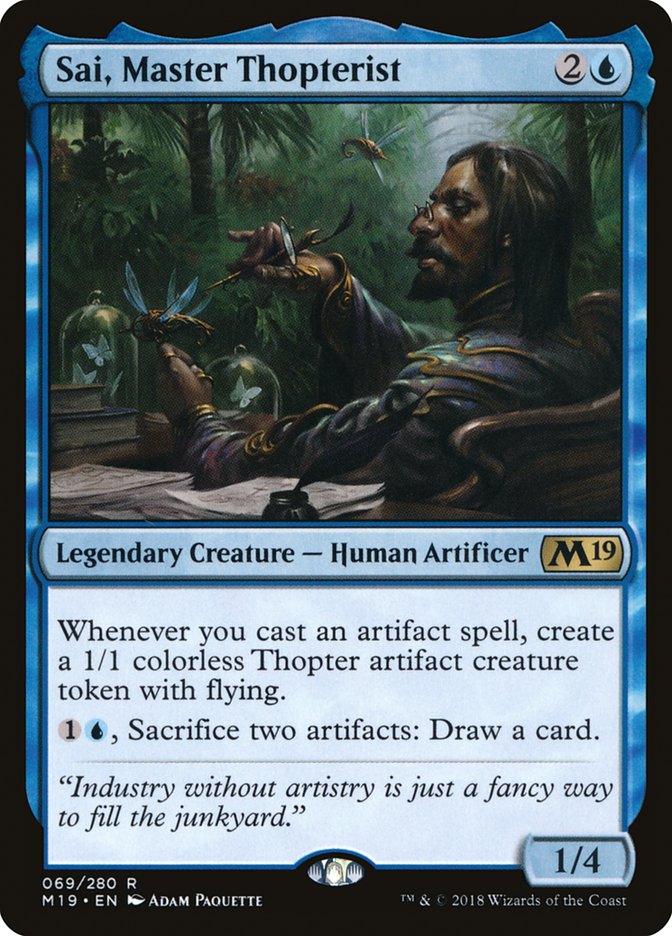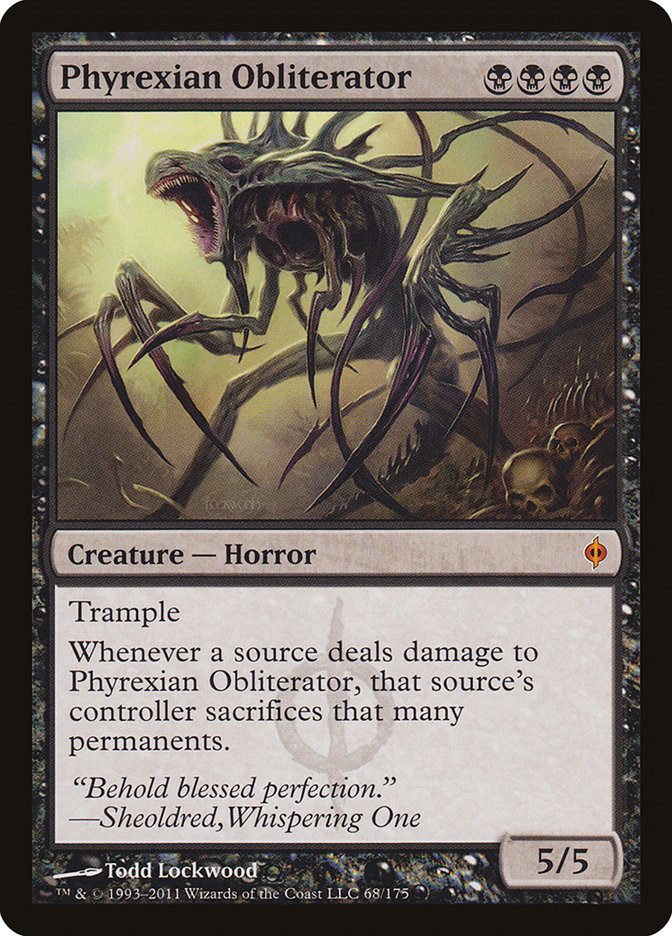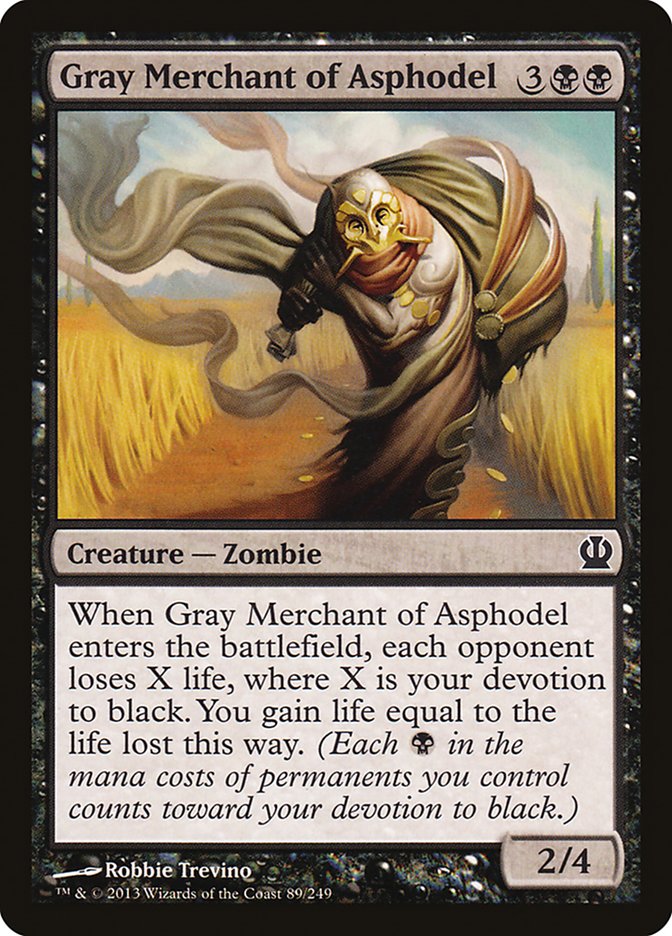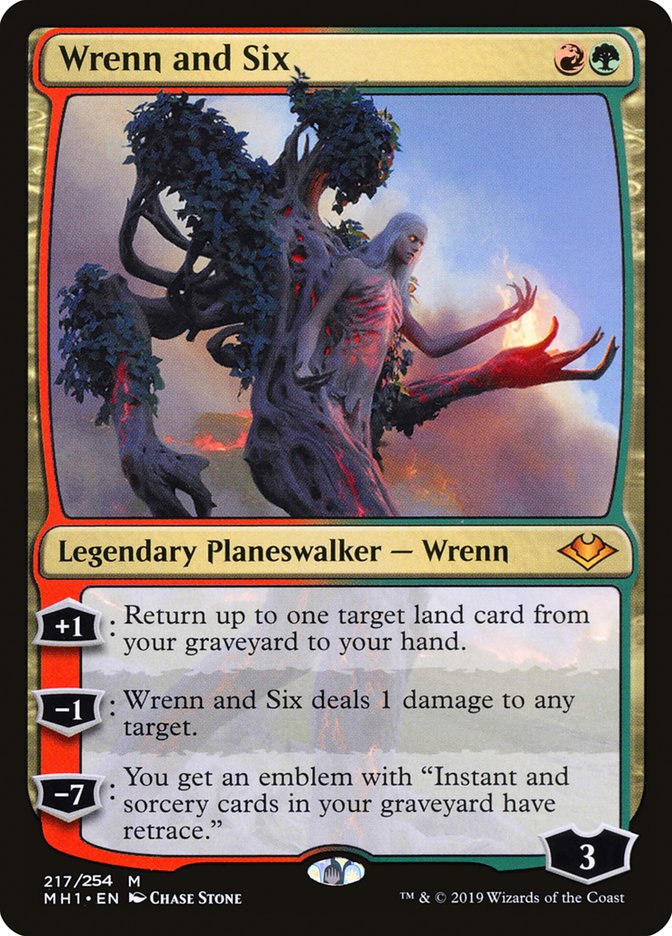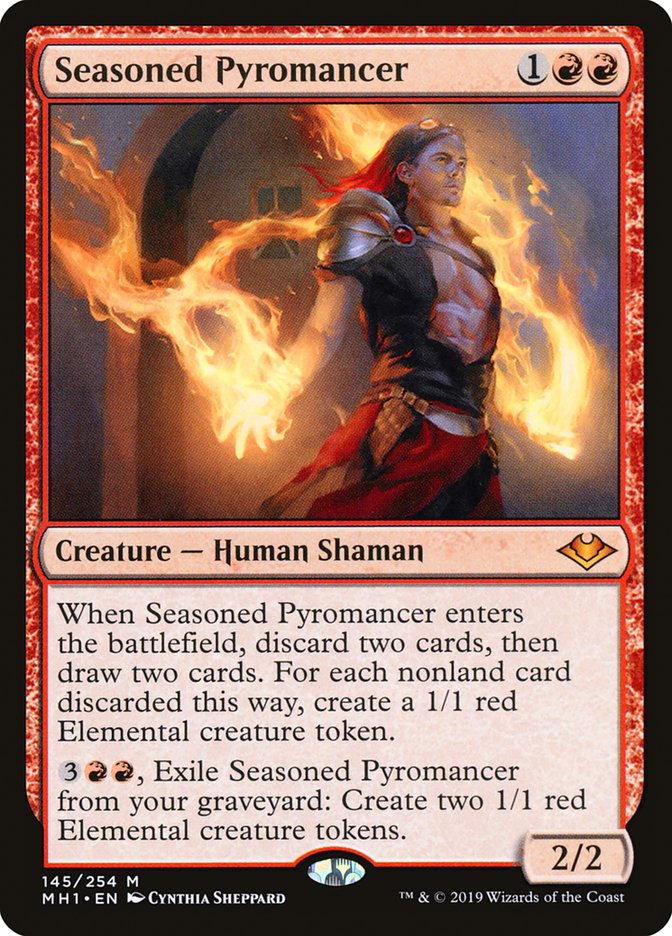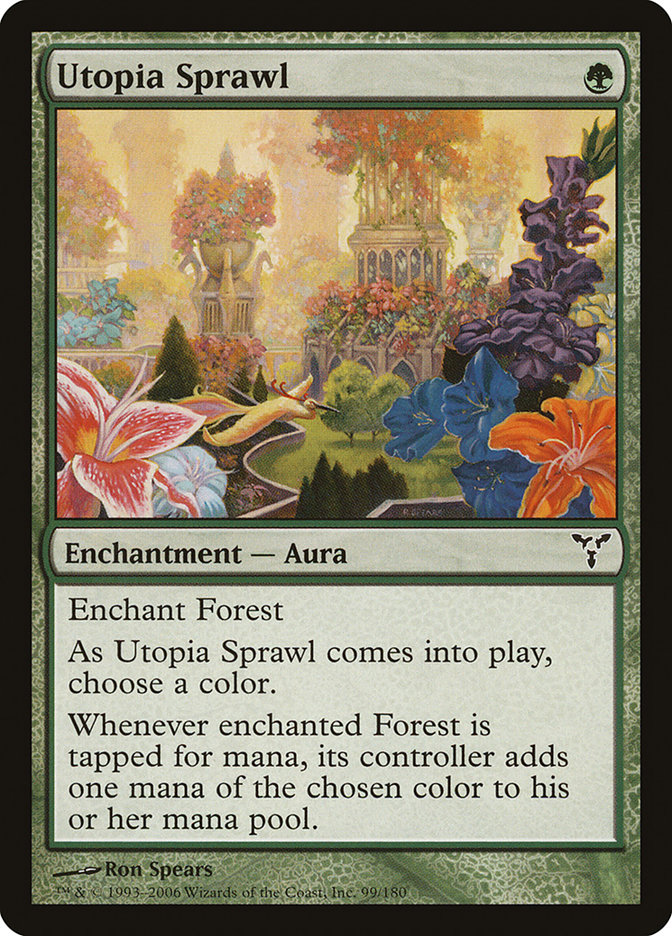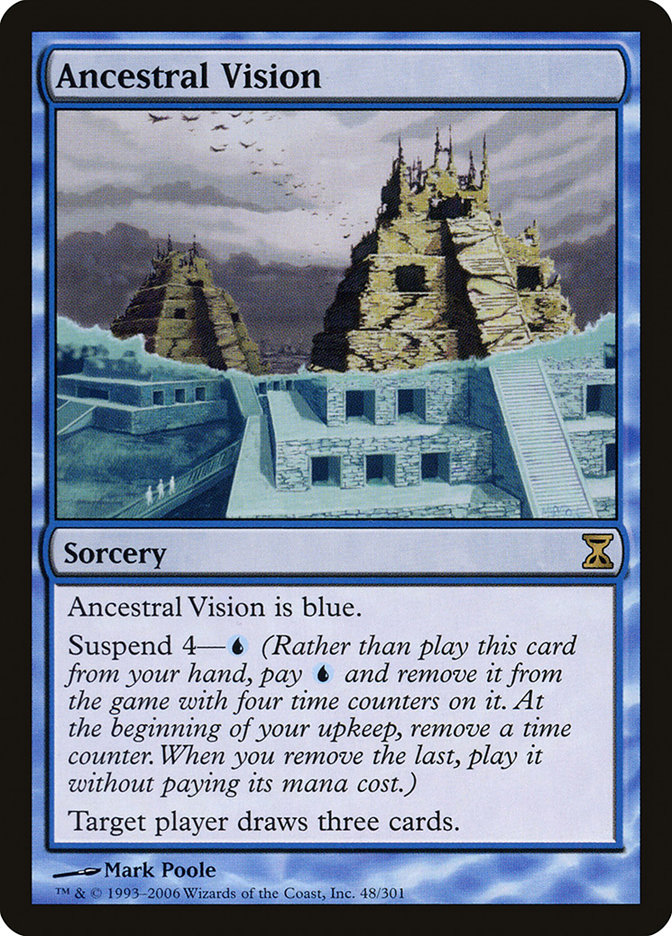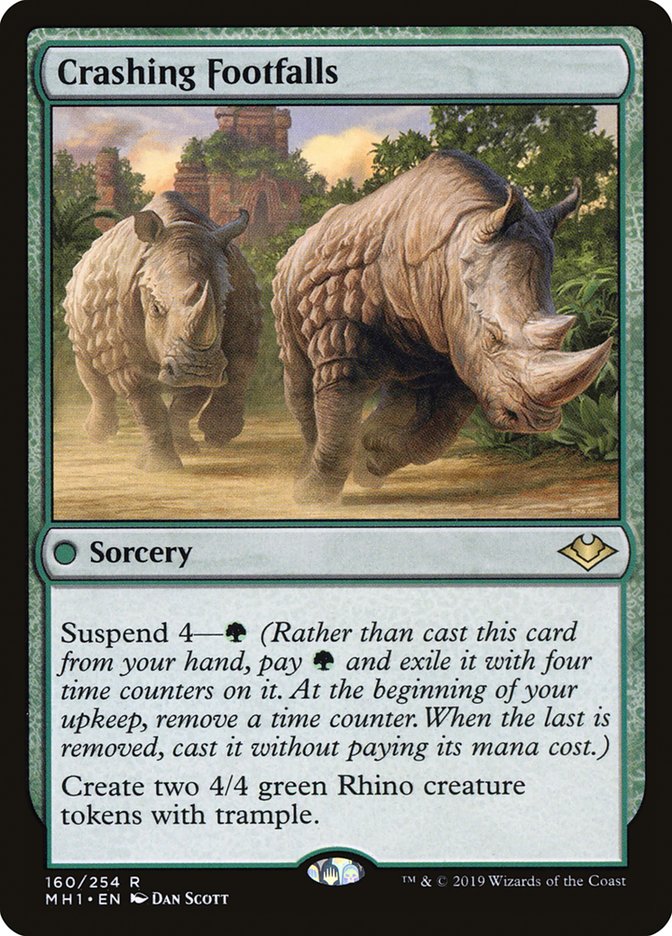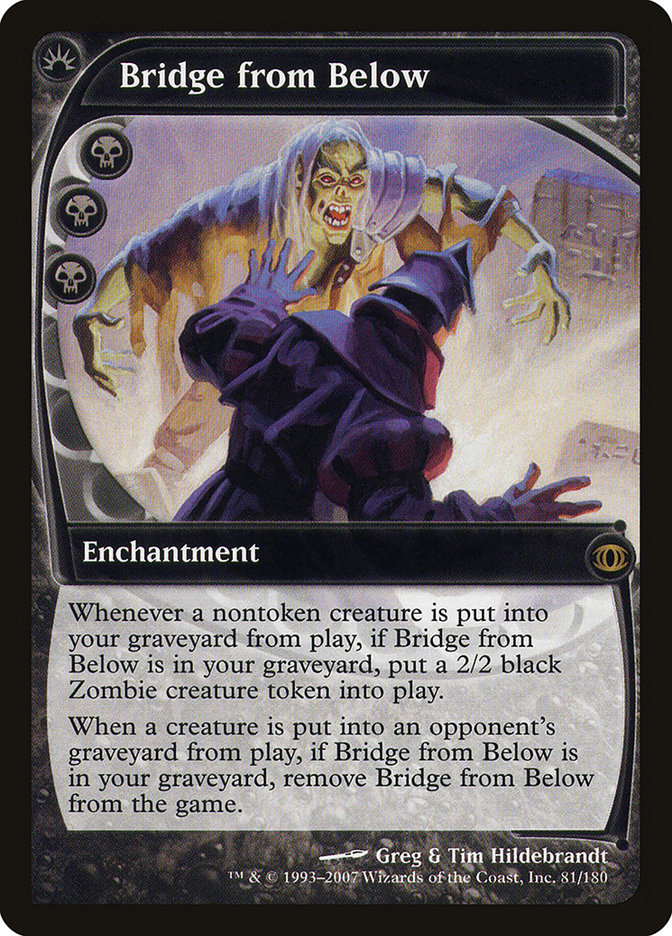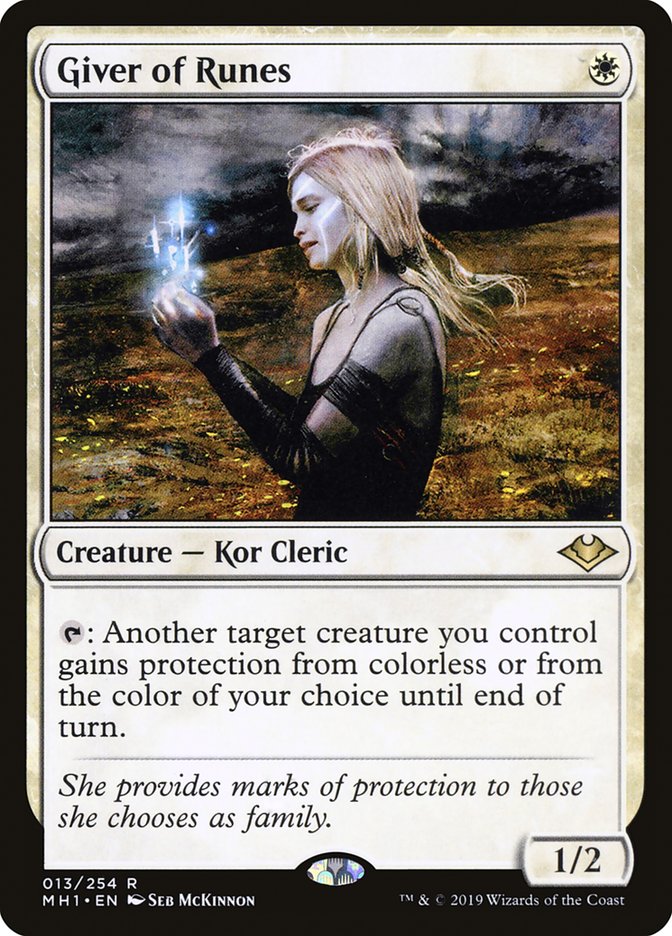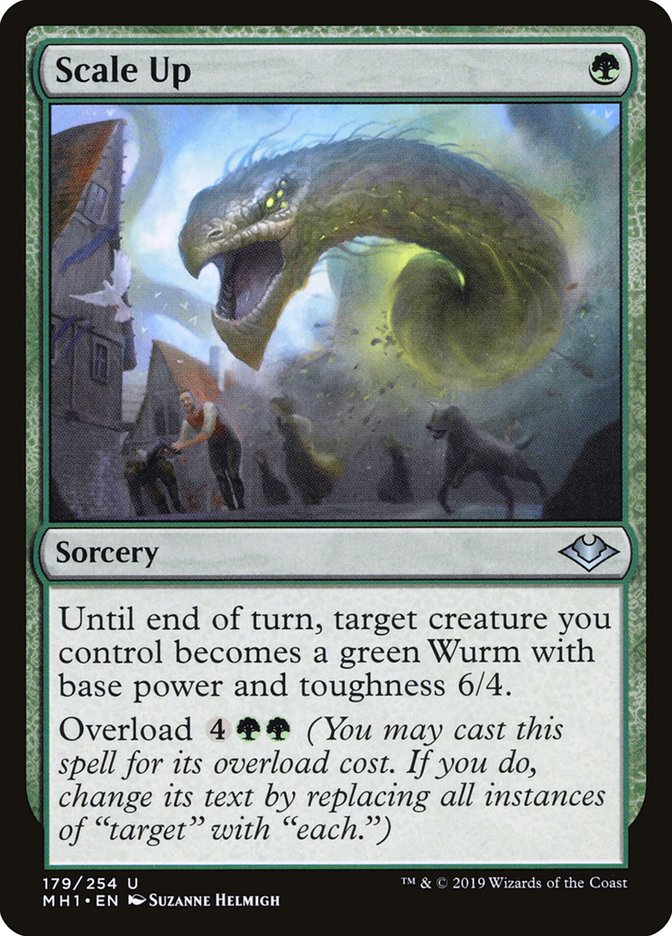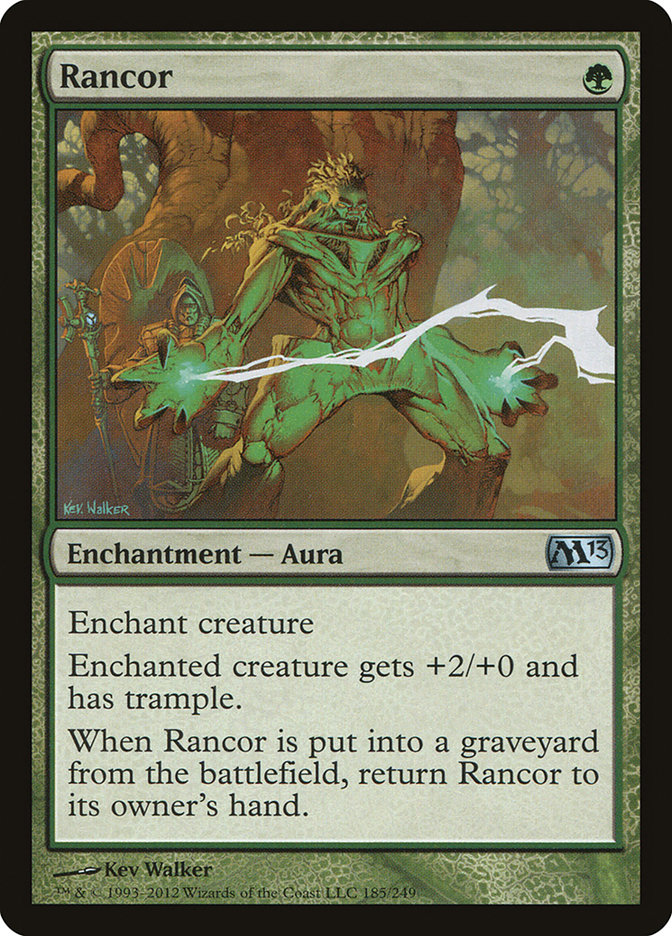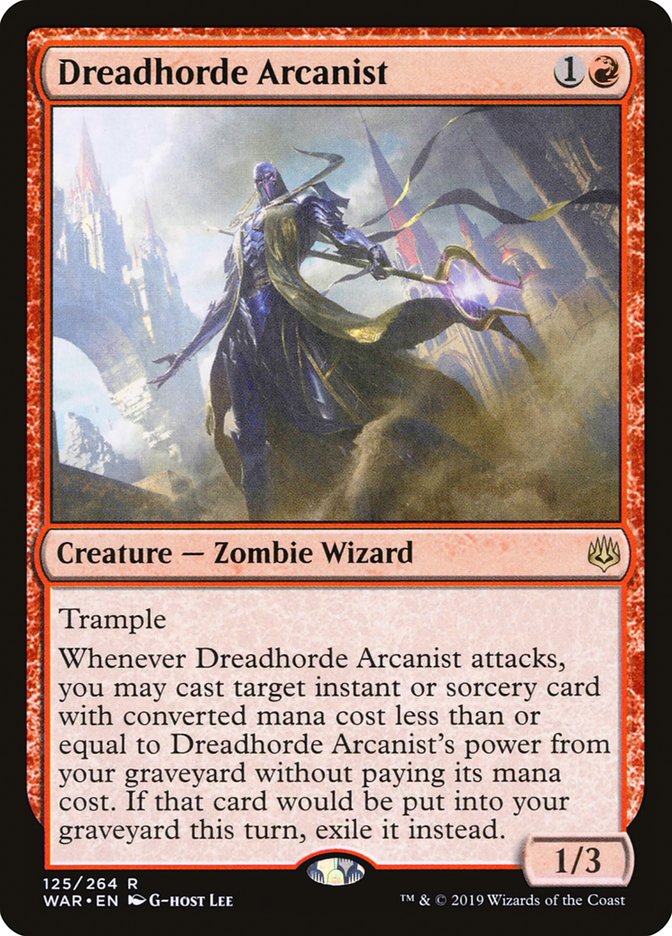With SCG Pittsburgh just a few days away, all eyes are on Modern. And while the smart money is on Hogaak, Arisen Necropolis to take the crown, there are plenty of viable options to choose from. Plus, we’re going to be looking for other decks to play after Altar of Dementia gets banned. No one wants another primer on Izzet Phoenix or Hogaak Bridgevine, so let’s do something a little different.
In today’s article, I’ll be going over eight different decks featuring cards from War of the Spark and Modern Horizons that have put up a solid performance in recent weeks. These decks are wild, but someone needs to wrangle them in a bit. With each deck, I’ll go over their strengths and weaknesses followed by a letter grade on viability for the weekend. Trust me, I’m not going to hold back if I think the deck is bad or poorly built. First up…
Esper Mentor
Creatures (11)
Planeswalkers (2)
Lands (19)
Spells (28)

Strengths
There’s a lot to like about this deck. Unearth really makes the deck tick, as getting back Monastery Mentor with a lot of untapped mana is powerful. Any deck that gets to untap with Monastery Mentor is likely winning the game a few turns later, and this one is no exception. While it doesn’t have a ton of card draw effects to sift through the deck, you can usually find something awesome to do like Inquisition of Kozilek to stifle your opponent’s development.
Unearth is particularly powerful alongside Snapcaster Mage because it bridges the gap and allows for an extra spell to be cast at the cost of one mana. There are some disgusting chains that involve Monastery Mentor, Snapcaster Mage, and Unearth. In many ways, this functions similarly to Kolaghan’s Command in Grixis decks. You’re mostly insulated from discard spells because there’s no “right” pick. Your opponent can take Unearth but you’ll be able to use Snapcaster Mage on it later on. If you take Snapcaster Mage, they can just Unearth it and cast Opt or the like immediately after.
Force of Negation is a big deal for this deck because it allows you to tap out on the third turn for Monastery Mentor while still offering either protection from removal on your opponent’s turn or a way to interact with whatever combo they’re about to present. You don’t have a ton of ways to gain actual card advantage, but with a low land count and card generators like Snapcaster Mage and Jace, Vryn’s Prodigy you don’t need to physically draw a lot of cards.
For a freshman attempt at a new archetype, this deck looks pretty nice on paper but I’m gonna need plenty more reps before I jump ship from Izzet Phoenix.
Weaknesses
This deck can falter in a lot of the same ways that Delver decks falter in Legacy. If you stick an early threat you can steal some games, but overall you’re relatively threat-light and an opponent with a ton of removal can keep you from getting anywhere. Your pairing of discard with a little bit of countermagic is also strained against dedicated combo opponents, and if you don’t draw a Surgical Extraction in the first game I doubt this deck is capable of winning against a normal draw from the Hogaak Bridgevine decks.
I’ve heard that Edgar Magalhaes is working on a version of this deck that plays Mishra’s Bauble, and I’m curious if he’s going to be playing it this weekend at #SCGPITT.
Bauble costs 0 (zero) mana. Been winning a good amount with this deck, gonna be tuning it more on stream tonight starting around 7pm EST pic.twitter.com/YF706MhWzL
— Edgar Magalhães (@EdgarMTG) June 25, 2019
Final Grade: A-. Powerful, proactive, and full of synergy. I definitely wouldn’t mind going into battle with Esper Mentor this weekend.
Grixis Urza
Creatures (10)
Lands (21)
Spells (29)

Strengths
This deck isn’t all that vulnerable to any one type of interaction. Urza’s the card tapping the artifacts, so Stony Silence isn’t much of a backbreaker. Shattering Spree and other Disenchant effects can be beaten easily. Plus, after sideboarding you can completely remove Goblin Engineer from your deck, protecting yourself from any graveyard hate.
I like the flexibility of this deck’s play patterns. In some scenarios, you’re tutoring for a silver bullet. Grafdigger’s Cage or Nihil Spellbomb as a repeatable effect with Goblin Engineer is quite powerful against Hogaak Bridgevine, but you can also combo your opponent out on the third turn. Mox Opal is one hell of a card, and it really shines in this particular deck as you’re ramping into Urza, Lord High Artificer.
Urza’s floor is as a 1/4 that generates a Karnstruct token and can immediately generate one mana. The ceiling is making infinite Thopter tokens, gaining infinite life and playing your whole deck. After playing with the deck some, I really love the fact that Urza can help you win a longer game. You don’t really need to combo, and the Temporal Aperture ability is surprisingly easy to use.
This guy just keeps showing up in artifact strategies, and it keeps being a great alternate win condition. Combined with Urza, your deck doesn’t really even need to combo off with Thopter Foundry and Sword of the Meek. That’s why we’re only playing one Sword of the Meek, after all.
Weaknesses
This deck is a little slow out of the gates on occasion. Stuff like Infect or fast draws from combo decks can be a nightmare, but that’s mostly because we don’t have much in the way of interaction. That lack of interaction is bridged by playing a couple of hate artifacts and hoping that the degenerate stuff your opponent is doing involves the graveyard.
I honestly don’t know if this deck is built correctly, or if you even want Thopter Foundry in the archetype; most of the games I win don’t even use the combo anyway. It’s just a nice backup plan when you don’t have a ton going on with Goblin Engineer.
Final Grade: C. Too slow, a clunky combo, and little to no disruption makes me hesitant to pick this one up.
Orzhov Obliterator
Creatures (12)
Planeswalkers (5)
Lands (24)
Spells (19)

Strengths
If you’re playing a format where Phyrexian Obliterator is good, then this deck is probably nuts. I’m terrified of an opposing Inkmoth Nexus, but I’m laughing in the face of an Izzet Phoenix opponent. And did I mention that Phyrexian Obliterator is a Horror, and thus cannot be bounced by Thing in the Ice? Oh, and all your removal is burn-based? Better kill me quick.
This deck is playing a lot of powerful spells and utilizes discard and removal to make sure it has enough time to cast everything. You also pad your life total nicely with Gifted Aetherborn and Gray Merchant of Asphodel.
Weaknesses
Five-mana spells need to win the game on their own. Unfortunately, that just isn’t true for Gray Merchant of Asphodel. I do like that it helps you win the game outside of combat, but I dislike that you need to build up your Devotion count to make it great. I have to imagine that this deck could be built fifteen or more cards differently in order to focus on making Liliana of the Veil or Lingering Souls better.
Overall, this deck just feels clunky. The average converted mana cost in a deck needs to be relatively low to be competitive in Modern, and this deck is just full of expensive threats. Plus, if you draw the wrong half of your deck in the wrong matchup you basically don’t do anything. Discard is worthless without a clock. Spot removal is often dead against combo or sticky creature decks. And in the end, sometimes Phyrexian Obliterator is just glacially slow.
Final Grade: D+. Clunky and top-heavy. I’d rather play Jund.
Jund
Creatures (14)
Planeswalkers (5)
Lands (23)
Spells (18)

Strengths
Jund is Jund and will do Jund things if you give them enough time. Discard into threat has always been pretty powerful, so why are we revisiting this now?
Wrenn and Six gives this deck another hard hitter in the two-drop slot, giving you extra lands when you’re running low or just picking off opposing small critters from the opponent. It’s surprisingly easy to ultimate, and then you get to turn all those extra lands into Lightning Bolts! It’s a perfect addition to the deck.
I’m in love with this card, but few decks are a better fit for this grindy card. It lets you turn dead discard or removal into creatures, and it works great with Liliana of the Veil because it helps you get empty-handed.
Weaknesses
Jund is Jund and will do Jund things. Your clock isn’t great, and your deck is chock full of removal. If you play against an opponent who is resilient to that removal, your deck just falls apart. For the most part that doesn’t happen, but Jund looks downright embarrassing in some scenarios. Tron in most forms is a terrible matchup, but that archetype seems to be on the downswing.
I’m loving the deck overall, and it is relatively hard for a deck with discard effects and a low curve to be “bad.”
Final Grade: A. Low curve makes it an ideal pairing of threats with cheap disruption like Thoughtseize. The new cards are phenomenal, breathing new life into the archetype.
Temur Suspend
Creatures (8)
Lands (18)
Spells (34)
- 3 Lightning Bolt
- 4 Serum Visions
- 4 Utopia Sprawl
- 4 Ancestral Vision
- 4 Restore Balance
- 2 Faithless Looting
- 4 As Foretold
- 3 Electrodominance
- 2 Finale of Promise
- 4 Crashing Footfalls
Sideboard

Strengths
A combo deck that doesn’t use the graveyard, Temur Suspend uses all sorts of new goodies and cheats on the casting cost. Crashing Footfalls, when paired with Electrodominance or As Foretold, lets you play a more controlling game while giving you an additional Suspend card to cast for free.
It’s strange to me that a single card can completely change how an archetype functions. Utopia Sprawl gives a bit of ramp to this (mostly) established archetype, and speed was something this deck desperately needed.
You’re naturally resilient to discard effects because you’re playing four copies of Ancestral Vision. If your opponent tries to disrupt you by managing As Foretold, the game is likely going long. And in that case, just Suspend your cards and let them have a huge impact later in the game. Your “combo” of Ancestral Vision or Crashing Footfalls with Electrodominance or As Foretold is not really a combo so much as a powerful synergy. The “combo” is actually Greater Gargadon and Restore Balance, and you’re just playing Ancestral Vision and Crashing Footfalls to bridge the gap. Plus, they’re powerful enough on their own to just win the game themselves.
Weaknesses
Restore Balance doesn’t really solve the Bridge from Below problem. Even if you get to fire off your key combo you can still lose to Hogaak Bridgevine, and I don’t think a few copies of Ravenous Trap are going to save you.
You’re generally weak to decks with a fast clock because your deck isn’t exactly operating at lightning speed. While you do have Utopia Sprawl and Simian Spirit Guide, you’re not physically winning the game for quite some time. And your “combo” pieces like Ancestral Visions and Crashing Footfalls don’t exactly kill your opponent the turn you cast them, or even the turn after! With so little true interaction, I could see stuff like Infect or Hogaak Bridgevine being a major problem. Even Izzet Phoenix or Death’s Shadow variants might be a bit too fast for you to handle.
Final Grade: B-. Interesting build, but it ultimately struggles with the same stuff as it did before. Crashing Footfalls adds a different angle but doesn’t actually solve any problems the archetype already had.
Selesnya Infect
Creatures (16)
Lands (20)
Spells (24)

Strengths
Infect thrives against other combo decks. If they aren’t interacting, you’re usually killing them on the second or third turn. If they are interacting, that story starts to change. And one new card really gave new life to the archetype.
I’m a huge fan of this card, if only because it acts like a Spellskite for one mana. Additionally, it replaces the need for stuff like Distortion Strike or Apostle’s Blessing to get in those last few points of damage. I wasn’t sold at first, but the card really bottlenecks your opponent. The fact that it provides both protection and evasion just makes it excellent.
Become Immense that doesn’t use the graveyard? Sign me up! I absolutely love this card.
A boon for this particular build, as two of your Infect threats don’t have evasion. When paired with Ichorclaw Myr, it becomes obscene. When facing an opponent with a few blockers, it becomes a way for you to actually break through. Plus, in a pinch you can suit up a Noble Hierarch and start working on their actual life total or their planeswalkers.
Weaknesses
Hyper-interactive decks like Jund are going to be problematic, but those decks tend to get massacred by Hogaak Bridgevine. I’m guessing that so long as that deck exists, Infect should be a viable strategy.
Final Grade: A-. Great against linear decks with low interaction. Giver of Runes and Scale Up are awesome additions to the archetype.
Dreadhorde Suspend
Creatures (11)
Lands (19)
Spells (30)
- 4 Lightning Bolt
- 1 Unearth
- 4 Ancestral Vision
- 1 Lightning Axe
- 2 Thoughtseize
- 4 Inquisition of Kozilek
- 4 Faithless Looting
- 2 Collective Brutality
- 2 Electrodominance
- 2 Finale of Promise
- 4 Crashing Footfalls
Sideboard

Strengths
There’s a lot going on here, so let me start by saying that your nut draws are phenomenal. You’re not really a combo deck, but you have some starts that definitely resemble a combo deck.
I love Seasoned Pyromancer here, as it gives you more fuel for Dreadhorde Arcanist while also providing you with serious pressure and turning your deck’s cards into actual cards! I’d like to fit some more copies of Unearth into the deck, but space is really tight.
This is the backbone of the deck. Combined with a discard spell for protection, Dreadhorde Arcanist can really get out of hand. You don’t actually need to cast Crashing Footfalls or Ancestral Vision to get full value out of the card, sometimes you just need to cast another Lightning Bolt or Inquisition of Kozilek to slow your opponent down.
Weaknesses
In a lot of ways you function like a combo deck, which means you’re vulnerable to the same types of disruption. If your opponent takes out one half of the combo, you’re often left with a relatively dead card unless you find some way to put it into the zone where you need it to be.
While this card is certainly good in this archetype, it doesn’t actually win the game as fast as I would like. It also struggles in the face of Thing in the Ice, acting as an unreliable finisher. The same can be said of Seasoned Pyromancer, but at least you get to cast that one again.
Finale Grade: B+. I love the idea, but it doesn’t win the game very fast. And because of that, your combos might get outclassed before you can actually close the game.
Rakdos Unearth
Creatures (22)
- 4 Bloodghast
- 2 Gurmag Angler
- 3 Flamewake Phoenix
- 1 Tasigur, the Golden Fang
- 4 Dreadhorde Arcanist
- 4 Seasoned Pyromancer
- 4 Lightning Skelemental
Lands (18)
Spells (20)

Strengths
Could this be the new Hollow One? Unlike the other Dreadhorde Arcanist deck, we aren’t getting cute with our card selection. We’re using Unearth, and we’re using it well. Lightning Skelemental and Seasoned Pyromancer pair nicely with Dreadhorde Arcanist to give you a fantastic Unearth package. Lightning Skelemental also gives you incredible closing speed while also pairing quite nicely with Thoughtseize for disruption.
Weaknesses
You’re using the graveyard with almost every card in the deck, making you vulnerable to stuff like Leyline of the Void, and I don’t think that’s actually necessary. While Tasigur, the Golden Fang and Gurmag Angler are great cards, you can probably get away with cutting them and Flamewake Phoenix (and maybe Bloodghast too) to reduce your exposure to those potent and prevalent anti-graveyard cards.
Your deck is also really bad at blocking.
Final Grade: B. For a first build this deck is intriguing, but I’m afraid there will be too many anti-graveyard cards for it to survive as-is. Look for this one to be great when people go back to Surgical Extraction instead of Leyline of the Void.
Well, that wraps up our foray into some of the cooler decks in Modern! There’s a lot to explore, as both Modern Horizons and War of the Spark gave us powerful new tools for a variety of archetypes. I’ve gotten to play with a few of these decks, and I can already find a few issues here and there that need to be addressed, but the ideas behind them are definitely solid.
Of note, Dreadhorde Arcanist and Seasoned Pyromancer keep showing up and I don’t think that’s just a coincidence. They have a bit of synergy together, but they’re also really solid creatures on their own. I love the fact that they both work nicely with Unearth, which means we’re likely to see a lot of exploration of the “minor graveyard mechanic” archetypes.
There are a lot of cards to keep an eye on moving forward, especially once something is done about this degenerate Hogaak Bridgevine deck. And while it might ultimately be kept in check by the sheer terror it has generated in Modern, with many people running maindeck graveyard hate or 7+ pieces in the sideboard, it’s still the most-winning deck in major Magic Online tournaments. It is definitely overshadowing some sweet stuff out of both new sets, and I’m glad I was able to share some of these nice brews with you.


